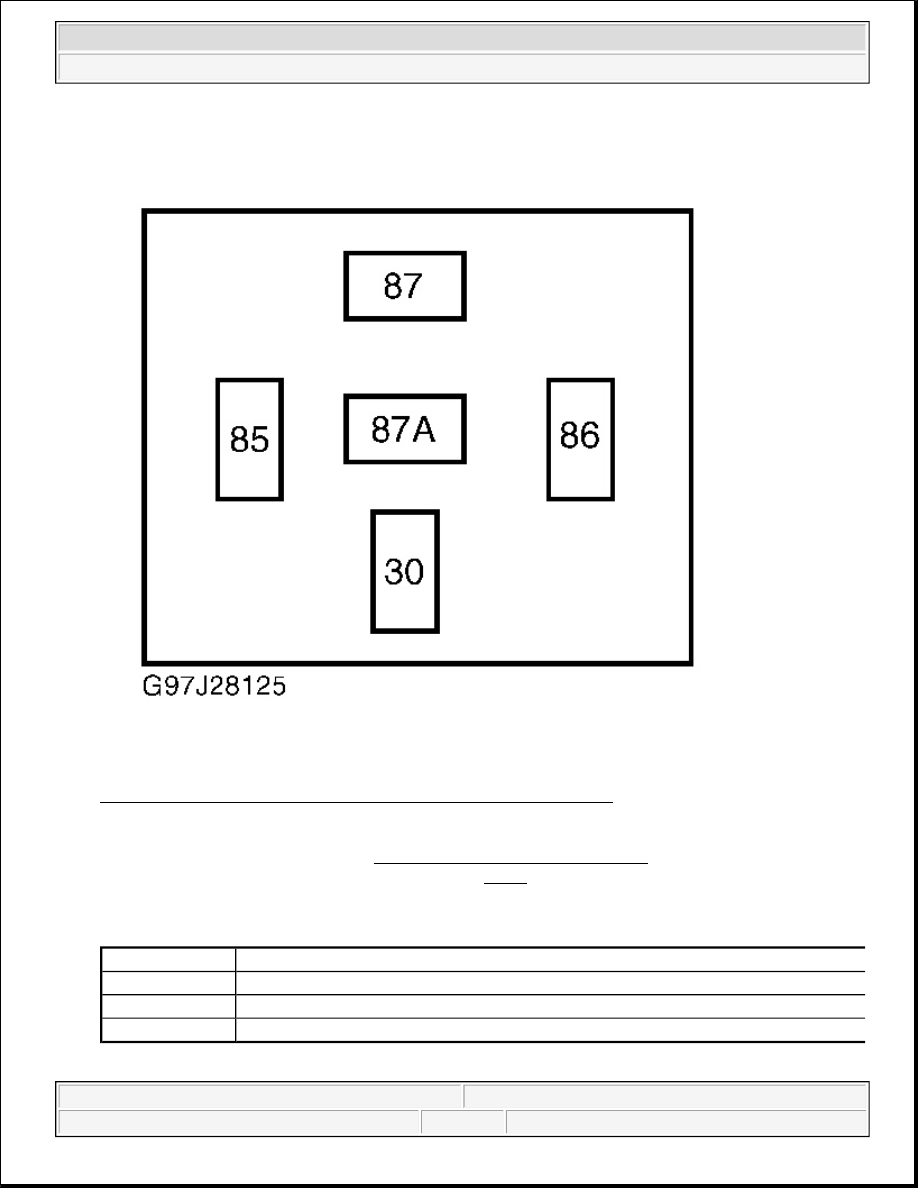Content .. 1343 1344 1345 1346 ..
Ford F150 Pickup. Instruction - part 1345

Fig. 7: Identifying Fuel Pump Relay Harness Connector Terminals
Courtesy of FORD MOTOR CO.
1. Remove fuel pump (valve) relay. See FUEL PUMP RELAY LOCATION table. Connect a jumper wire
between fuel pump relay cavities No. 30 and 87. See Fig. 7. This will cause tank valves to open and
pressurize fuel system. Remove jumper wire and go to next step.
FUEL PUMP RELAY LOCATION
2. Reinstall fuel pump relay. Using Combustible Gas Detector (134-00049), check spring lock coupling and
Application
Location
Crown Victoria
In Relay Center Box No. 1, On Left Side Wheelwell In Engine Compartment
Econoline
In Battery Junction Box, On Left Side Of Engine Compartment
F150
In Battery Junction Box, On Rear Left Side Of Engine Compartment
2003 Ford Pickup F150
2003 ENGINE PERFORMANCE System & Component Testing - CNG